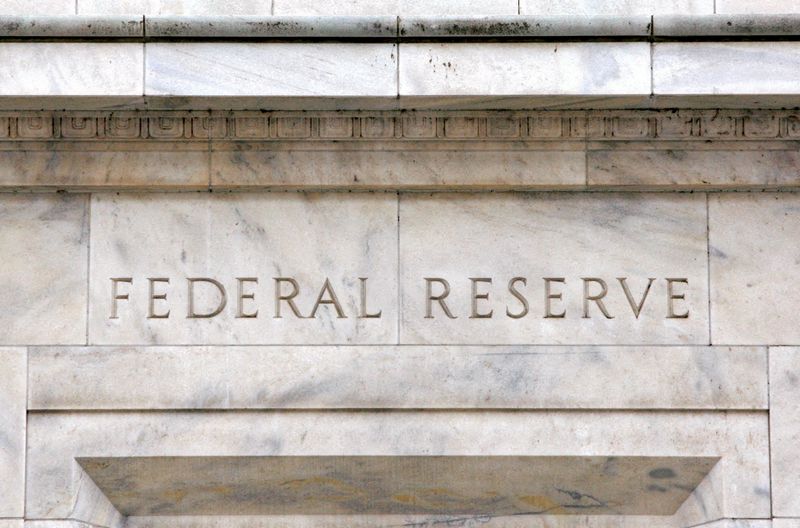The failures of two large regional U.S. banks in mid-March blew a $22 billion hole in the nation's deposit insurance fund and shook confidence in the global financial system.
On Friday the banks' regulators - the Federal Reserve and the Federal Deposit Insurance Corporation - will publish their accounts of what happened at both institutions, and propose fixes to prevent a repeat. The FDIC will also publish a separate report on deposit insurance by Monday.
Here's what's expected:
THREE REPORTS
The U.S. central bank's report will focus on Silicon Valley Bank, which regulators shuttered on March 10 after depositors withdrew $42 billion in 24 hours and put in requests for another $100 billion that morning, amounts totaling 85% of the California-based lender's deposits. Fed Vice Chair for Supervision Michael Barr is leading that review.
The FDIC will publish two reports: One on its supervision of Signature Bank (OTC:SBNY), which was closed a couple of days after SVB; the other focusing on the deposit insurance system that FDIC Chair Martin Gruenberg has said will include policy options for coverage levels, excess deposit insurance and the adequacy of the deposit insurance fund.
BANK SUPERVISION
When a new team of bank examiners at the San Francisco Fed took over day-to-day supervision of SVB in the second half of 2021, they began internally flagging issues at the bank: Liquidity risk, ineffective board oversight, deficient governance, and incorrectly modeled interest-rate risk.
The Fed's report could fill in gaps on when and how this litany of problems was communicated to the bank's management and board of directors, and up the central bank's own supervisory chain of command, including to staff at the Fed's Board of Governors in Washington.
Unanswered questions include whether SVB executives took steps to address the concerns, if supervisors called out other risks such as the bank's heavy reliance on uninsured deposits, and why examiners did not act more urgently or do more to force changes.
Barr has said the Fed's report will include confidential supervisory information, including citations and exam material not typically disclosed.
Although less is known about the FDIC's supervision of New York-based Signature, its report on Friday could lay out whether examiners had flagged issues prior to the bank's collapse, and if the lender's management had taken any steps in response.
At least in SVB's case, "flags had been raised, and why more was not done is not currently obvious to me," said Kathryn Judge, a professor at Columbia Law School. "We will get additional clues" in the reports, she said.
BANK REGULATION
Barr has said the Fed's review will include an assessment of rules finalized in 2019 that relaxed the strictest oversight for firms holding between $100 billion and $250 billion in assets, which included SVB and Signature.
Those rules allow banks of SVB's size to ignore market-driven swings in the value of some of their longer-term securities when reporting capital levels. That masked a drop in their value as interest rates rose and triggered panic among depositors when SVB sold those securities at a nearly $2 billion loss.
Barr told Congress in late March that the SVB review will look at whether more stringent rules could have headed off SVB's risk-management failures.
It's unclear how detailed Barr's regulatory proposals may be. Before the banking sector turmoil in March, he was already reviewing bank capital requirements that some expected would result in tougher rules for large regional lenders.
"I don't expect the (report's) recommendations to really get into the nitty gritty of how that tailoring rule or other rules should be changed," said Todd Phillips, a former FDIC official who is now a fellow at the Roosevelt Institute. "That will be a long process that I imagine was started before this whole fiasco."
Any changes would come slowly. New rules require a public notice and comment period that typically takes months, and once approved often years to be phased in.
DEPOSIT INSURANCE
The second FDIC report could provide insight into how officials are thinking about the role of deposit insurance, currently capped at $250,000 per depositor, in financial stability. After the FDIC closed SVB without finding a buyer to assume all of the bank's deposits, including those exceeding the cap, several other large regional banks were inundated with their own withdrawal requests.
Over that weekend authorities moved to insure all of the SVB and Signature deposits, and signaled they would do the same for other failed banks if they posed a systemic risk to the financial system.
"The most interesting thing I expect to see is what the FDIC recommends about the deposit insurance cap," Phillips said. "I think it'll just be interesting whether they recommend keeping the cap, whether they recommend raising it for some accounts, all accounts."
Some analysts have floated raising the insurance cap for small business accounts used to manage payroll and other transactions.
Any changes would need legislation from a deeply divided Congress.
OTHER ISSUES

Lawmakers last month asked Barr about the Fed's emergency loan facility for banks, known as the discount window, including its opening hours. It is not clear if that is within the scope of the review.
Some lawmakers and analysts also expressed concern about the role of social media and mobile banking in the rapid outflow of deposits at SVB and Signature. Although challenging for regulators to address, the Fed and FDIC could weigh in on that matter.